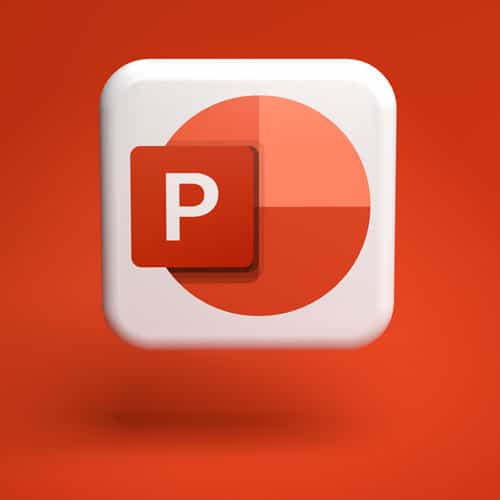Presentation Season
How to Avoid the Blah, Blah, Blah
The ability to make a good presentation is a key skill for all parking professionals looking to advance their career, product, or service. How you convey your ideas is important. Here are some practical ways to present your thoughts.
Hint: avoiding the blah, blah blah of keeping your presentation from being boring is not just about your PowerPoint Slides.

As parking professionals, we are often expected to do more than just execute our normal day-to-day running of our organization, department, or program. Like most professionals, our industry may require an element of presentations, ranging from pitching services to prospective clients, providing training to colleagues or revealing the results of a case study.
Whether you are presenting to management, board members, clients, and/or providing training for conference audiences, your persuasion strategy starts with knowing the outcome you want to achieve. What do you want the audience to do, feel, believe, or decide? Most importantly, how do you get started?
The first mistake people make is that they begin with the PowerPoint when it should be the final touch to any presentation that is designed to move an audience to take some action. First, you should understand your goals for the presentation. You can work backwards with the content development, and finish with how you will visually convey key concepts using PowerPoint or other presentation tools.

Many people are reluctant to surrender their thinking that it’s all about the PowerPoint. Most people spend more time looking for pleasing templates than planning the content path and how to lead the audience to the goal. If you do not believe me, consider these facts that Alexa Harrison published in 2019: “Powerful Presentation Stats to Transform Talks…”
- 90% of people believe a strong narrative in a presentation is critical for audience engagement.
- 55% of people say a great story is primarily what holds their focus.
- 46% of presenters feel the hardest part of creating a successful presentation is crafting a compelling story.
- 64% of people believe that a flexible presentation with two-way interactions is more engaging.
- Presentations with visual aids are 43% more persuasive than those without.
We will not ignore what is important in a PowerPoint presentation, but we will give some suggestions herein. For now, let us focus on the more important items.
The Key to Influence
People are drawn to what they can understand quickly and with ease, not the best products or ideas. The same is true for presentations. If your audience is bored, it is not their fault, it’s yours! As Dr. Paul Homely writes in his book by the same title, “Just because you’re an expert doesn’t make you interesting.” Every presenter faces competing distractions internal to individuals in the audience. You find yourself competing with your audience while they focus on their devices, think about an upcoming vacation, family illness, financial stress, or my favorite, they are just hungry because you’re the presentation before lunch. Because of all these distractions, your presentation must address issues important to them and be compelling if you want to capture their attention and convince them of something. The more you understand how people process information from the following nine essential questions, the better your presentation.
- How do people see, read, listen?
- How do people think, learn?
- How are people motivated to take action?
- How do people react to their environment?
- How do people react emotionally?
- How do people react to you?
- How do people focus their attention?
- How do people respond to stories?
- How do people decide?
Campfires & Storytelling
There is a reason we like to gather around campfires—to hear a good story. Think of a presentation as the ultimate campfire.
There is a reason we like to gather around campfires—to hear a good story. Think of a presentation as the ultimate campfire. Relevant, believable stories are essential to helping the audience feel your words, visualize ideas, and facilitate breakthroughs. Stories that are simple and specific are also more persuasive. A good story helps the audience buy into you, whereas then they can then buy into what you are presenting. When I am presenting on fraud, I always provide some great stories of some of the worst fraud cases I have witnessed.
Another great approach is before you get started with your presentation, ask questions. For example, I will ask my audience, “How many of you have had to confront an employee for stealing?” Or, has this ever happened to you? These types of questions prompt the audience to recall a personal experience, and then this helps them relate to what you are about to present.
Be sure your story is relevant to the theme or content of your presentation. Start by thinking of a concept. For example, “The Characteristics of an Organization with a Great EV Infrastructure Program.” Next, provide the story (i.e., “Someone who has a successful infrastructure…”). Finally, show them how to apply it (i.e., “Here is how you can build your own EV infrastructure…”).
Don’t Be a Stick in the Mud

Don’t be someone who doesn’t try new things – a “stick in the mud.” Step away from the podium, venture out into the audience’s area. This is a sign of a well-prepared and experienced presenter. This also presents an aura that you are confident in what you are sharing, and people are attracted to confidence. There are five primary ways that you may be judged by the audience:
- Body position and purposeful movement
- Hand gestures and facial expressions
- Tone of voice and eye movement
- Emotions and feeling you evoke
- How well you control the room
Effective presenters understand that every presentation or speech is a performance to some degree; it’s a slight exaggeration of your normal persona. This why Steve Jobs always walked the stage when he addressed his team at Apple.
PowerPoint: Don’t Make them do all the Work
The big mistake many presenters make is while telling a story they show complex PowerPoint slides, such as Excel spreadsheets or large labeled graphics, minimized at an unreadable resolution. It is great to wrap stories around facts and numbers for the emotional connection, but don’t make the audience do all the hard work with statistics and spreadsheets. Instead of tying them up with charts and graphs, tie them up with the story and use the visual aid to help connect to the story. For example, if you are telling a story about how size in a company does not make a difference in the data, show a slide that displays that. As an example, I like to show a picture of a Great Dane looking down at a Chihuahua.
When making your PowerPoint deck there are at least six keys to a great design.
- Make slides glanceable. The three-second rule; the audience should be able to grasp your message of a slide within three seconds.
- Use limited text. That means no bullet lists and try to use 15 words or less. It can be done! You must invest time and effort into creating one key message per slide.
- Incorporate lots of white space or contrasting colors. Think of it like a picture frame around a great piece of art. The most important part is the art within.
- Use large typefaces. You are designing for the people at the back of the room.
- Think “billboard design” when it comes to slides. Big on graphics, large headlines, and contrasting/complementary colors. Read within three seconds as you drive by them.
- Stop using cheesy stock photos and clip art. It’s boring! Subscribe to sites such as Pond5, Shutterstock, and iStock to add relevant interest.
Being an effective communicator is an important skill to have or develop. While giving professional presentations might seem daunting, with the right presentation, a basic knowledge of information design, and some familiarity with persuasion language, you can hit it out of the park and avoid the blah, blah, blah that so many feel when sitting in the audience. Remember to start with the end in mind and embrace the idea that speaking, teaching, and presenting are never about you, it is always about your audience, and what they want and need.
-
Katherine Beaty, CFEhttps://parking-mobility-magazine.org/author/katherine-beaty-cfe/February 3, 2022
-
Katherine Beaty, CFEhttps://parking-mobility-magazine.org/author/katherine-beaty-cfe/July 5, 2022
-
Katherine Beaty, CFEhttps://parking-mobility-magazine.org/author/katherine-beaty-cfe/December 16, 2022

CAPP Professional: Larry J. Cohen, CAPP
Larry J. Cohen, CAPP is Executive Director at the Lancaster

MSTPA at 25
Paving the Way for Transportation Excellence

CAPP Professional: Melinda M. Alonzo, CAPP
Melinda M. Alonzo, CAPP is Senior Director of Parking and








